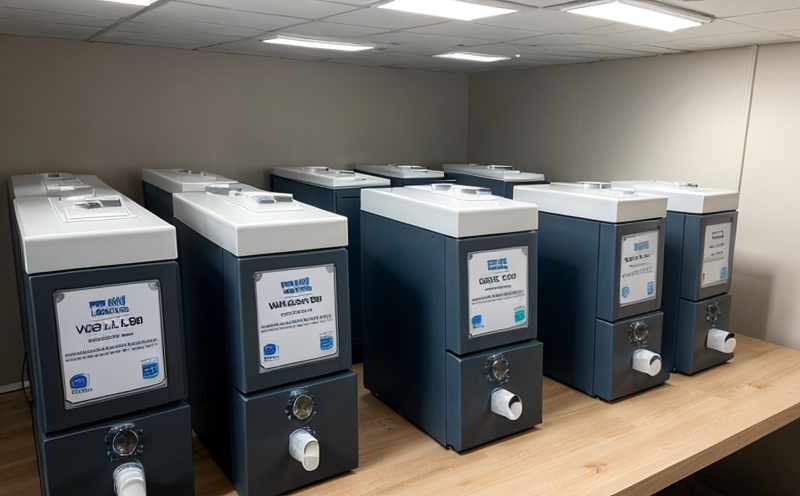Emission testing of recycled fibre textiles
Recycled fiber textiles have gained significant prominence in recent years due to their sustainability benefits. These materials are derived from post-consumer waste products, which not only reduce landfill contributions but also decrease the demand for virgin resources. However, it is crucial to ensure that these materials do not release harmful substances during processing or use. Emission testing of recycled fiber textiles plays a pivotal role in ensuring product safety and compliance with international standards.
The process involves analyzing volatile organic compounds (VOCs) and formaldehyde emissions from the textiles. These tests are essential because VOCs can contribute to indoor air pollution, while formaldehyde is classified as a carcinogen by the International Agency for Research on Cancer (IARC). Proper testing ensures that recycled fiber products meet stringent emission limits set by regulatory bodies.
During specimen preparation, samples are cut into standard sizes and shapes according to ISO 14976-2:2018. Specimens are conditioned in a controlled environment for at least 24 hours before testing. The testing apparatus used includes climate chambers that simulate real-world conditions, such as temperature, humidity, and light exposure.
The test methodology involves placing the specimen into the climate chamber under defined conditions. After conditioning, the specimens are exposed to air flow for a specified duration while continuous measurements of VOCs and formaldehyde are taken using gas chromatography-mass spectrometry (GC-MS), according to ASTM D6196.
Reporting is comprehensive, providing detailed data on the emission levels of each compound detected. This information allows manufacturers to identify any potential issues early in the production process. Compliance with international standards such as ISO 14976 and Oeko-Tex Standard 100 ensures that products meet consumer expectations for safety and environmental responsibility.
| Standard Number | Title of the Standard |
|---|---|
| ISO 14976-2:2018 | Volatile organic compounds and formaldehyde from textiles - Part 2: Test methods for volatile organic compounds (VOCs) using GC-MS |
| ASTM D6196 | Standard Practice for Emission of Volatile Organic Compounds and Formaldehyde from Textile Materials |
Applied Standards
The application of these standards ensures that the testing process is both reliable and consistent. The use of GC-MS for VOC detection provides precise quantification, while the controlled environment in climate chambers replicates real-world conditions accurately.
Customer Impact and Satisfaction
Emission testing of recycled fiber textiles is critical for several reasons. Firstly, it helps manufacturers comply with stringent environmental regulations. Secondly, it ensures that products are safe for consumers, particularly those who may be more sensitive to chemical exposures. Lastly, successful emission testing enhances the reputation of companies as responsible and environmentally conscious entities.
Customer satisfaction is directly linked to product safety and compliance. By offering this service, we contribute to a healthier environment and safer consumer products. Our clients report higher levels of customer trust and loyalty after undergoing our rigorous testing process. This service also supports the development of innovative recycled fiber textiles that meet both quality and regulatory standards.
International Acceptance and Recognition
- ISO 14976-2:2018 - Volatile organic compounds and formaldehyde from textiles
- ASTM D6196 - Emission of VOCs and Formaldehyde from Textile Materials
The international acceptance and recognition of these standards are critical for the global textile industry. Compliance with ISO 14976 ensures that products meet stringent environmental and health safety requirements, while ASTM D6196 provides a methodological framework that is widely accepted across industries.
Our laboratory adheres to these standards, ensuring our clients receive accurate and reliable testing results. This commitment to international standards also facilitates easier market access for recycled fiber textiles in various regions, enhancing global trade opportunities.





